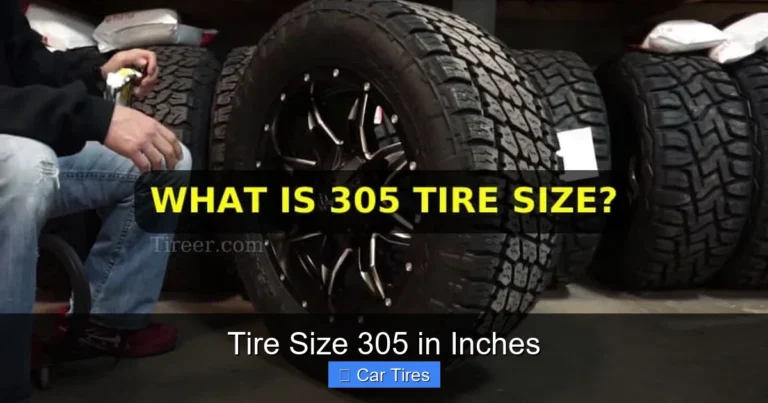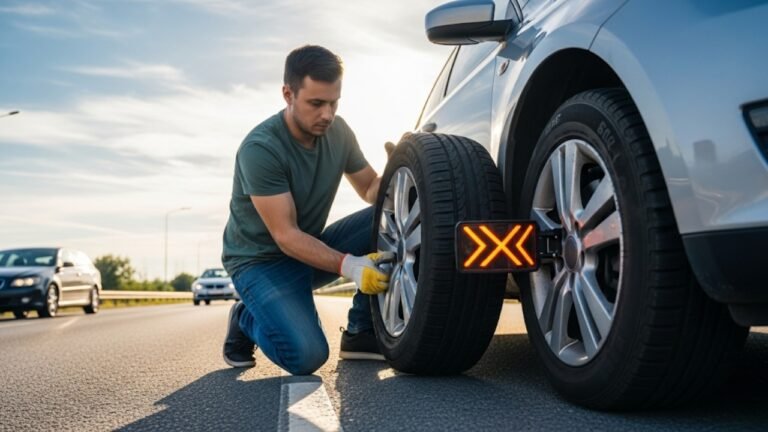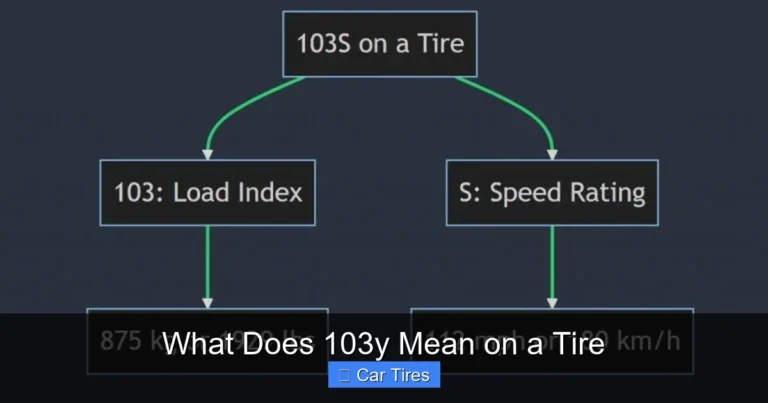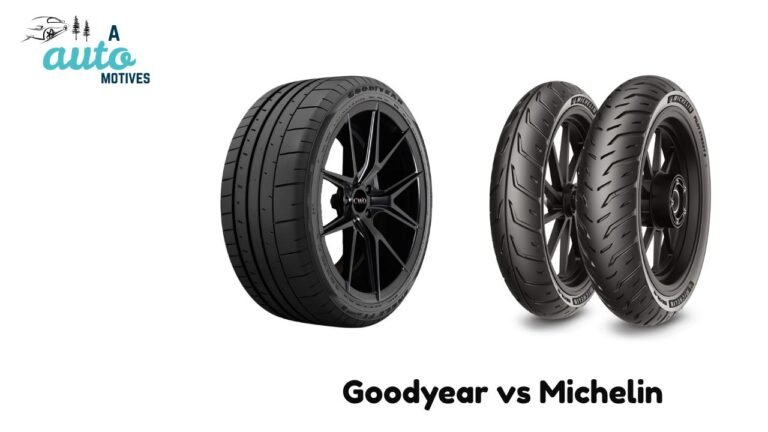Does Tire Pressure Change with Temperature?
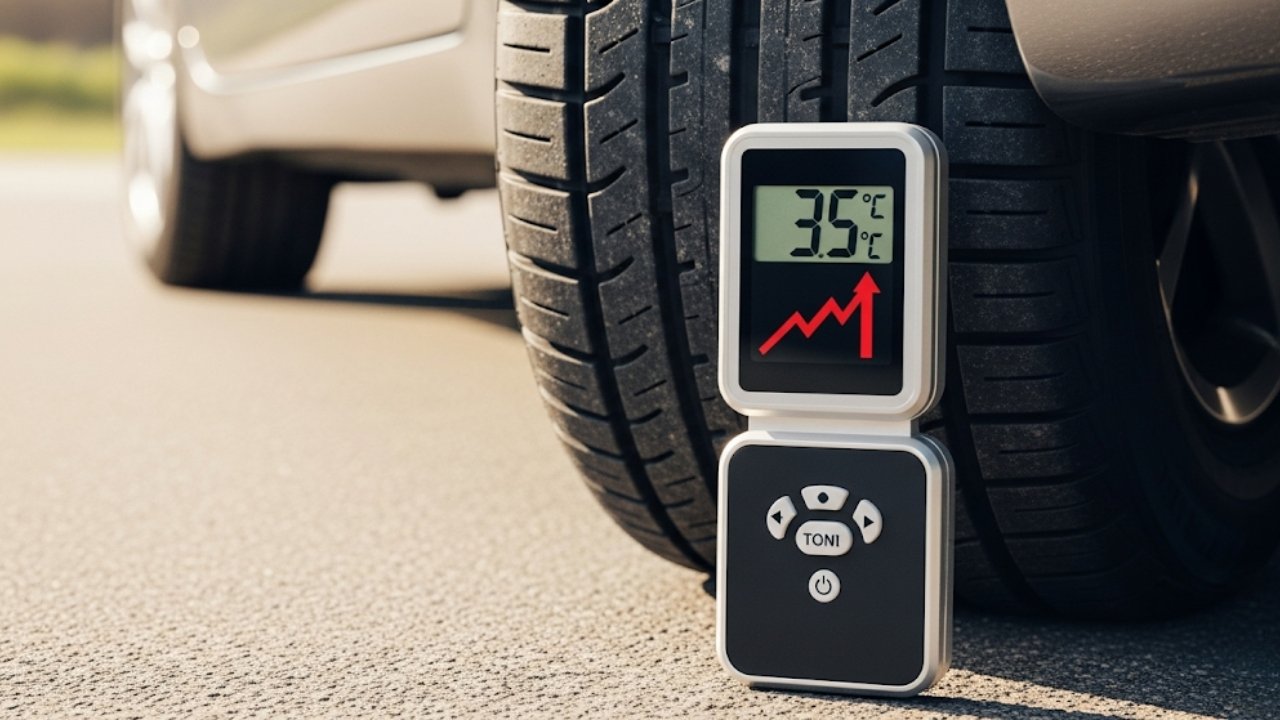
Picture this: You’re running late for work. You grab your coffee, hop in the car, and boom—a warning light flashes. Your tire pressure is low. But it was fine yesterday, right?
You might wonder, “Did I run over something?”
Not necessarily.
What most people don’t realize is that tire pressure can change with temperature—a lot more than you’d think.
And trust me, I’ve been there too. One January morning, my dashboard lit up like a Christmas tree. My first thought? Puncture. But when I checked at the gas station, everything was fine. The mechanic simply smiled and said, “Cold air, buddy. It shrinks.”
It made me curious. And I learned something we all should know.
In this guide, I’ll walk you through why tire pressure changes with weather, how it affects your safety, and what you can do about it—all in easy words. Let’s dive into the science, the practical tips, and a few stories along the way.
In This Article
- 1 Why Does Tire Pressure Change With Temperature?
- 2 Hot Weather and High Pressure: The Opposite Side
- 3 Why Should You Care About Tire Pressure Fluctuations?
- 4 The Science Behind It (Made Simple)
- 5 When Should You Check Tire Pressure?
- 6 Quick Bullet Summary: Why It Matters
- 7 Does It Happen Overnight?
- 8 Common Myths About Tire Pressure and Temperature
- 9 How Seasonal Changes Affect Tire Pressure
- 10 Tire Pressure, Safety & Fuel Economy
- 11 Quick Tips for Managing Tire Pressure Year-Round
- 12 Real Life: How I Handle It Personally
- 13 FAQs: Answering What You’re Probably Wondering
- 13.1 1. Does tire pressure change with temperature daily?
- 13.2 2. Should I adjust my tire pressure every day?
- 13.3 3. What if my tire pressure goes too high in summer?
- 13.4 4. Why does my tire light come on every winter morning?
- 13.5 5. Can tire pressure affect mileage?
- 13.6 6. Should I inflate my tires more in winter?
- 13.7 7. Do nitrogen-filled tires help with temperature change?
- 13.8 8. What’s the best time of day to check tire pressure?
- 14 Final Thoughts: Take 5 Minutes, Drive Safer
Why Does Tire Pressure Change With Temperature?
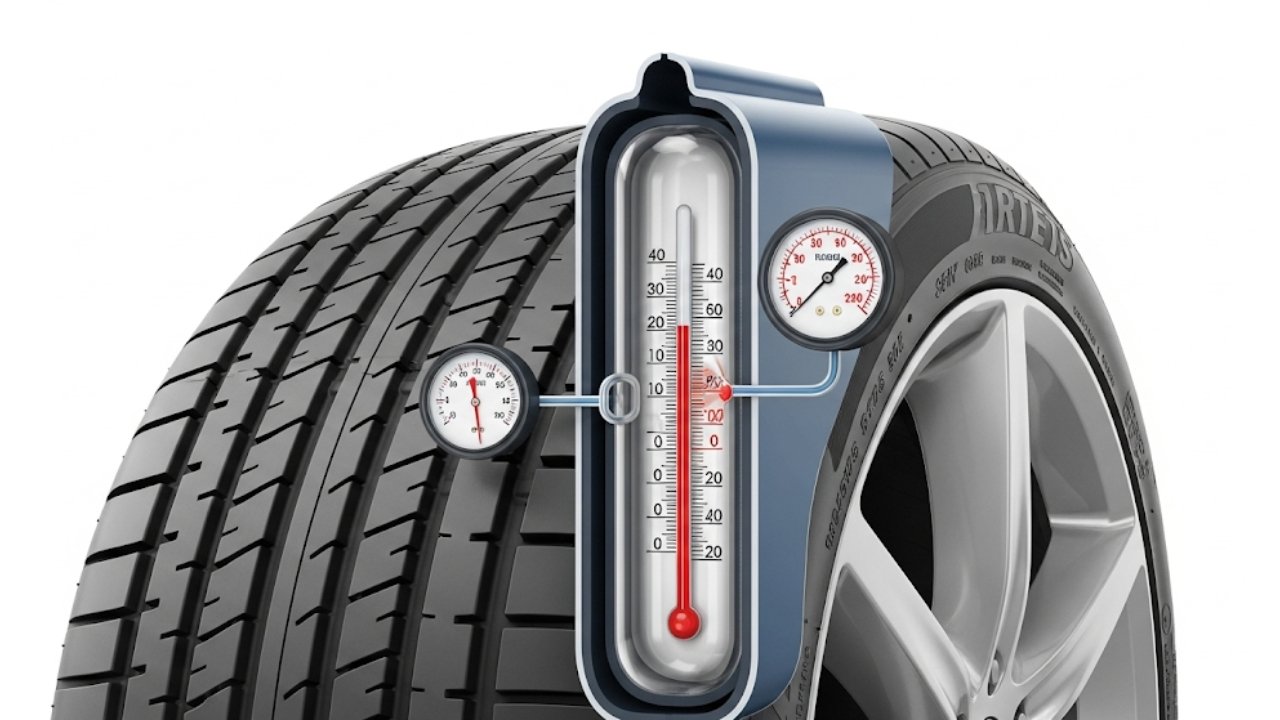
Your tires are no different. When temperatures drop, the air molecules inside the tire move slower and take up less space. This reduces pressure.
For every 10°F (5.5°C) drop in temperature, your tire loses about 1 PSI (pounds per square inch).
Let’s say your tires are filled to 35 PSI at 70°F. If the temperature drops to 30°F overnight, your tire pressure might fall to 31 PSI. And that can trigger the TPMS (Tire Pressure Monitoring System) warning light.
Now, this doesn’t mean you have a leak—it just means the air got cold and compressed.
Here’s a simple table to help visualize how it works:
| Outside Temp (°F) | Approx Tire Pressure (PSI) |
|---|---|
| 80°F | 36 PSI |
| 70°F | 35 PSI |
| 60°F | 34 PSI |
| 50°F | 33 PSI |
| 40°F | 32 PSI |
| 30°F | 31 PSI |
| 20°F | 30 PSI |
This fluctuation is normal, but ignoring it can cause problems—like poor fuel economy, uneven tire wear, and even tire failure.
Hot Weather and High Pressure: The Opposite Side
Let’s flip the coin.
On a hot summer day, the opposite happens. Heat causes air molecules to move faster and push outward. That increases the tire pressure.
This might not sound like a big deal, but too much pressure makes your tires harder, reduces the contact patch, and increases the risk of blowouts.
If your car’s manual recommends 35 PSI and it’s 100°F outside, your tires might jump to 38–39 PSI after driving a few miles.
It’s like heating a soda can. If you shake and heat it too much—it pops.
So whether it’s freezing or sizzling, the answer to “does tire pressure change with temperature” is a loud yes.
Why Should You Care About Tire Pressure Fluctuations?
You might wonder—is a 1-2 PSI drop that serious?
Well, here’s what could happen:
-
Lower tire pressure means more tire surface touches the road. That increases friction, which wears the tire faster and lowers fuel efficiency.
-
Over-inflation causes less grip and makes the tires more prone to bursting on impact (like hitting potholes or curbs).
-
Incorrect pressure—either way—means longer stopping distances and poorer handling, especially in rain or snow.
Let me tell you what happened to a friend of mine, Arif. He was driving to Sylhet early one foggy morning. Just outside Mymensingh, he took a corner a little too fast. His rear tires had lost pressure overnight because of the cold, and his car skidded badly. Luckily, no one was hurt. But it was a reminder of how crucial tire health is.
The Science Behind It (Made Simple)
Let’s break it down like you’re 12 years old (or like me trying to understand math at 8 AM).
Here’s the formula at work:
PV = nRT — the Ideal Gas Law.
Don’t worry—we won’t go into high school chemistry.
Just know this:
-
P = Pressure
-
V = Volume
-
T = Temperature
If volume stays the same (your tire doesn’t grow or shrink), then when temperature drops, pressure drops too. It’s not magic. It’s science.
So, the answer to the question, “does tire pressure change with temperature?” is not only yes—it’s scientifically proven. That’s why car engineers and tire manufacturers recommend checking pressure in cold conditions, preferably in the morning before driving.
When Should You Check Tire Pressure?
Here are the best practices:
-
✅ Check pressure when tires are cold (before driving).
-
✅ Use a digital tire pressure gauge (they’re more accurate).
-
✅ Inflate to the manufacturer’s recommended PSI (usually on the driver’s door frame or the owner’s manual).
-
✅ Recheck after drastic temperature changes—like the first snow or heatwave.
Tip:
Don’t use the maximum PSI listed on the tire sidewall—that’s the limit, not the target.
If you’re in a place like Minnesota or Toronto, where winter hits hard, check it once a week. Even in Bangladesh, those cooler January mornings can fool you.
Quick Bullet Summary: Why It Matters
-
Cold air = Lower tire pressure
-
Hot air = Higher tire pressure
-
Both extremes affect:
-
Fuel economy
-
Tire wear
-
Braking
-
Steering response
-
-
Always check in the morning
-
Adjust according to weather patterns
Does It Happen Overnight?
Yes, even overnight temperature drops can reduce tire pressure. Especially during fall or winter, nights get much colder than days.
You go to bed at 65°F and wake up to 40°F. That 25°F difference? That’s about 2.5 PSI lost, just from sleeping. No, it’s not your tires leaking—it’s just the cold whispering, “I’m back.”
Common Myths About Tire Pressure and Temperature
❌ Myth #1: TPMS Sensors Always Know the Truth
Most modern cars have Tire Pressure Monitoring Systems (TPMS). While useful, they’re not perfect.
Sometimes they won’t alert you until pressure is dangerously low. Or they might blink due to minor temperature dips, which doesn’t always mean something’s wrong.
Pro Tip: Don’t rely solely on TPMS. Use a tire pressure gauge once every couple of weeks, especially when seasons shift.
❌ Myth #2: Set It and Forget It
Tires aren’t slow cookers. You can’t just fill them once and move on. Temperature is a moving target, especially in places where mornings are cold and afternoons heat up fast.
Pressure can swing wildly between morning and evening. If you fill your tires in the heat of the day, by the next cold morning, they might be underinflated again.
Better approach: Fill your tires early in the day before the sun warms them up.
❌ Myth #3: The PSI on the Tire Sidewall Is the Right Number
This one’s super common.
The number printed on your tire’s side isn’t what your tires should be inflated to—it’s the maximum pressure they can handle.
Always refer to the sticker inside your car door or your owner’s manual for the correct pressure. That’s what gives you optimal performance, comfort, and safety.
How Seasonal Changes Affect Tire Pressure
Let’s talk about the four seasons and how they play with your tires like moody teenagers.
Spring
Temperatures can swing between chilly mornings and warm afternoons. Check pressure weekly as your tires adjust.
☀️ Summer
Hot air means rising pressure. Tires overinflated from heat might feel bouncy or less grippy. Don’t let them go too high—check pressure after long drives.
Fall
As temps drop, tire pressure follows. Watch for TPMS lights as the season changes. This is the most overlooked time.
❄️ Winter
This is where most people run into trouble. Cold mornings suck the air right out. Keep a portable air pump in your trunk—trust me, it’s a lifesaver.
Tire Pressure, Safety & Fuel Economy
Here’s the practical bottom line: if your pressure is off, you’re not driving safely or efficiently.
Low Pressure:
-
More surface contact
-
Increased rolling resistance
-
Higher fuel use (by up to 3%)
-
Poor traction and stopping power
High Pressure:
-
Reduced contact patch
-
Harsh ride
-
Increased risk of punctures or blowouts
Driving with properly inflated tires saves gas, saves your tires, and saves your life. It’s one of the easiest and cheapest safety checks you can do.
Quick Tips for Managing Tire Pressure Year-Round
Here’s a practical list you can keep in your glove box:
-
✅ Check tires monthly and before long trips.
-
✅ Use a quality gauge—digital is best.
-
✅ Don’t check right after driving (heat skews results).
-
✅ Add 1–2 PSI if you’re carrying heavy loads or traveling long distances.
-
✅ Keep a mini air compressor in your trunk.
-
✅ In extreme climates, check weekly.
If you live in a place like Chicago, Alaska, or even Dhaka in winter, make it a part of your morning routine.
Real Life: How I Handle It Personally
Let me be real with you.
I used to ignore tire pressure completely. Then one winter, while heading to Cox’s Bazar with my cousins, our sedan started pulling to one side. We thought it was the alignment. Turns out one tire had dropped 6 PSI overnight from the cold.
We wasted time and almost had an accident on a wet highway.
Now, I check pressure every Sunday morning, with a hot cup of tea in hand. It takes 5 minutes. And it gives me peace of mind.
FAQs: Answering What You’re Probably Wondering
1. Does tire pressure change with temperature daily?
Yes, absolutely. As little as 10°F change can affect pressure by 1 PSI. It’s a daily swing, especially in spring or fall.
2. Should I adjust my tire pressure every day?
No. But check it regularly, especially when seasons change or you notice handling feels “off.”
3. What if my tire pressure goes too high in summer?
If it’s only 1–2 PSI above, it’s fine. But if it jumps 4–5 PSI, release a bit of air (when tires are cold).
4. Why does my tire light come on every winter morning?
Because cold air shrinks inside your tires. It usually resets after you drive a bit, but still check pressure to be safe.
5. Can tire pressure affect mileage?
Yes! Underinflated tires reduce fuel efficiency by up to 3%. That adds up over time.
6. Should I inflate my tires more in winter?
Stick to your vehicle’s recommended PSI. If you’re losing 2–3 PSI from cold mornings, top it off. But don’t go over the limit.
7. Do nitrogen-filled tires help with temperature change?
Slightly. Nitrogen is less reactive to temperature shifts than regular air. But you’ll still see some variation.
8. What’s the best time of day to check tire pressure?
Morning, before you’ve driven. That’s when your tires are truly cold and give accurate readings.
Final Thoughts: Take 5 Minutes, Drive Safer
So, does tire pressure change with temperature?
Yes—just like how your mood changes with the weather, your tires react to heat and cold too.
Whether it’s a frosty morning or a blazing afternoon, those little changes can affect your wallet, your comfort, and your safety.
Make tire pressure checks a regular habit. It’s quick, easy, and way more important than most people think.
Your car takes care of you every day. This is one way you can take care of it back.

